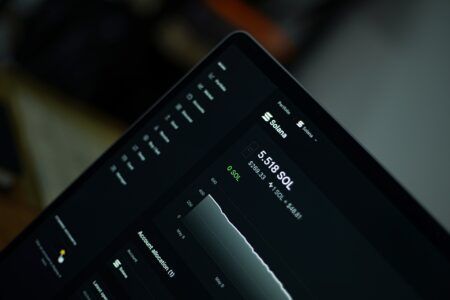At approximately 12:13 UTC on Sunday (August 30), markets on the Solana-powered Serum DEX, which its developers (Project Serum) describe as “the world’s first completely decentralized derivatives exchange with trustless cross-chain trading”, went live.
What is Solana?
Solana is “an open source project implementing a new, high-performance, permissionless blockchain” that is maintained by the Geneva-based Solana Foundation.
Solana protocol was created by Solana Labs, which is backed by investors such as Multicoin Capital, Slow Ventures, Foundation Capital, 500 Startups, and Abstract Ventures. Anatoly Yakovenko is the creator of Solana and Greg Fitzgerald is its principal architect.
Solana’s documentation states that it’s possible for a centralized database “to process 710,000 transactions per second on a standard gigabit network if the transactions are, on average, no more than 176 bytes.” The Solana team hope that one day they will achieve that “theoretical limit of 710,000 transactions per second.” Currently, Solana can process around 50,000 transactions per second.
What is Project Serum?
According to the Serum white paper, the aim of this project was to deliver “a fully functional decentralized exchange with trustless cross-chain trading, all at the speed and price that customers want.” Furthermore, although this DEX would be built on Solana in order to make sure it is fast, it would need to be “interoperable with the Ethereum ecosystem and ERC20 tokens.”
The Serum token (SRM) is the utility token of the Serum ecosystem. This is an SPL token on Solana, and is cross-listed as ERC20.
Serum’s orderbook is “a decentralized automated full limit orderbook”, which will “give traders full control over their orders, unlike automated market making.”
Serum’s orderbook and matching is “fully automated on-chain and orders are from Serum end users.”
Cross-chain contracts in Serum are “physically settled”, which means “easy margin positions in DeFi on synthetic assets.”
Serum protocol also features SerumBTC, “a model for creating an ERC20 or Solana tokenization of BTC”, and SerumUD, “a model for creating a decentralized stablecoin”.
Project Serum is built by the Serum Foundation (“a group of experts in cryptocurrencies, trading, and decentralized finance”).
At the technical level, the Serum DEX is “a program on the Solana blockchain”, and due to the speed of Solana, it can currently handle “hundreds of orders per second per market.”
Sam Bankman-Fried, CEO of both Alameda Research and crypto exchange FTX, wrote a nice introductory thread on Project Serum on July 27:
Serum DEX Goes Live
According to a Twitter thread by Project Serum’s official account (@ProjectSerum):
- “Anyone can list a market on Serum”
- “All listings on Serum for now are SPL tokens (currently “a whole group of teams are building out cross-chain bridges for native on-chain support”)
- You need to use “Sollet” (Solana SPL Token Wallet) for trading on the Serum DEX.
- The Serum Academy has a good tutorial on how to trade on the Serum DEX.
Currently (as of 21:00 UTC on August 30), the following markets are live on the Serum DEX: MSRM/USDT; MSRM/USDC; BTC/USDT; BTC/USDC; ETH/USDT; ETH/USDC; SRM/USDT; and SRM/USDC.
Featured Image by “xresch” via Pixabay.com
The views and opinions expressed by the author are for informational purposes only and do not constitute financial, investment, or other advice.








